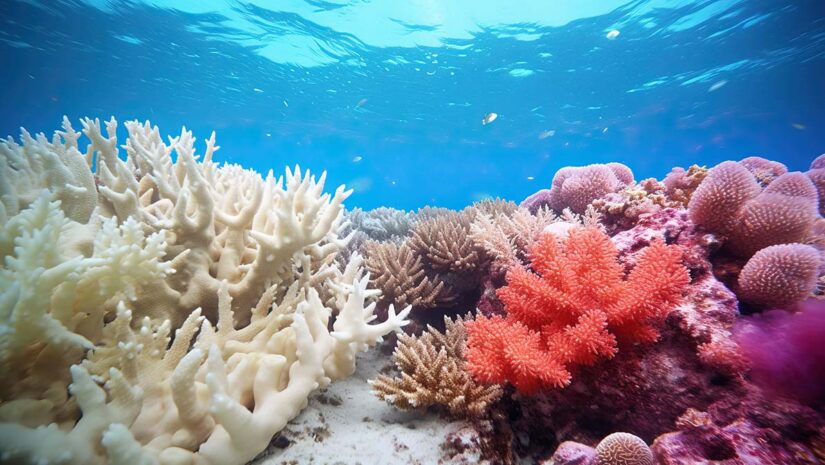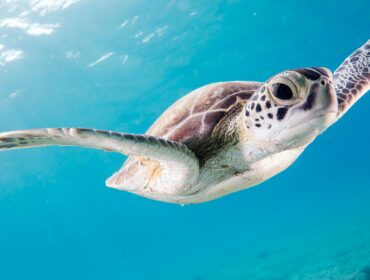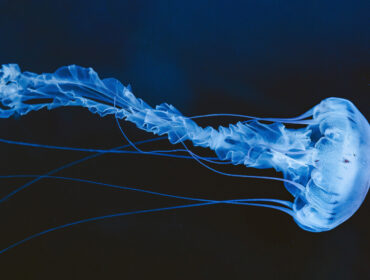An activity like scuba diving is more fun and enjoyable when you know and understand what you’re seeing down under, such as all the different types of coral and other marine life.
There are times when coral or Coral Polyps get mistaken for plants or rocks, but they are actually small marine invertebrate animals attached to an exoskeleton structure that acts as their home. Their homes come together to form the hard chalky structures that we see joined together and forming coral reefs.
To fully learn about all corals, you first need to know that there are two main types of coral: hard coral and soft coral. We’ll talk about hard coral in this article and soft coral here.
So, what is hard coral?
Hard coral, scientifically referred to as scleractinians, are made of a rigid calcium carbonate – limestone and are visually similar to rocks. They are also called stony coral or reef-building coral.
Each polyp has a hard exoskeleton made up of calcium carbonate and a chalky internal skeleton that stays solid even after they die. As each generation of polyps dies, the coral grows a bit larger. However, because each polyp is so small, hard coral grow at a very very slow rate.
Types of Hard Coral
Staghorn Coral (Acropora cervicornis)
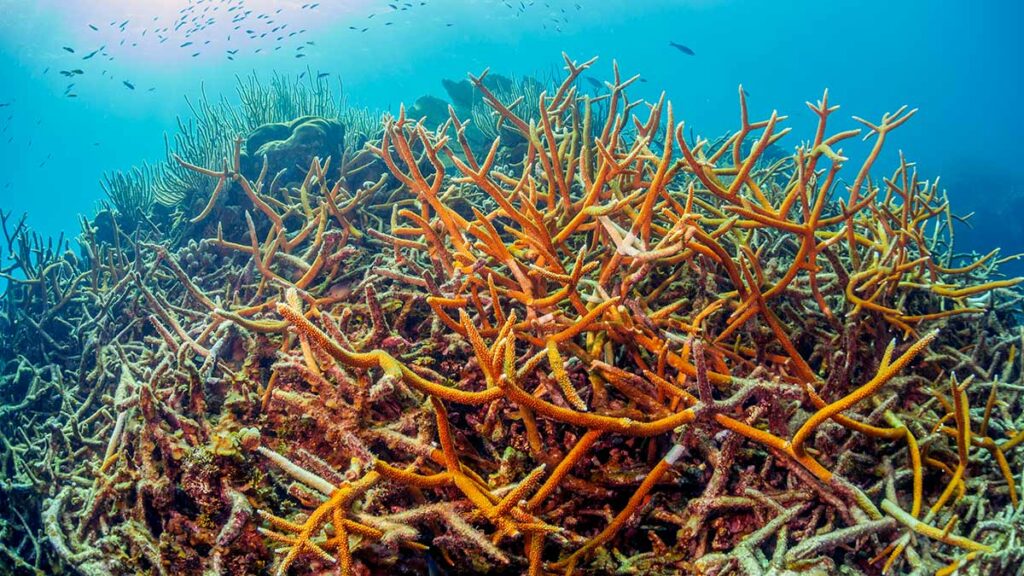
The staghorn coral is named this way because of its branches, which grow in a particular pattern that makes its body look like the antlers of a stag or elk. Additionally, its branches resemble the antlers or fingers of a deer. This coral’s branches can grow vertically or can be angled differently, creating an intricate structure.
Fun fact: They are one of the three most important Caribbean corals because of their large contribution to reef growth and fish habitat.
Branching Coral (Acropora digitifera)
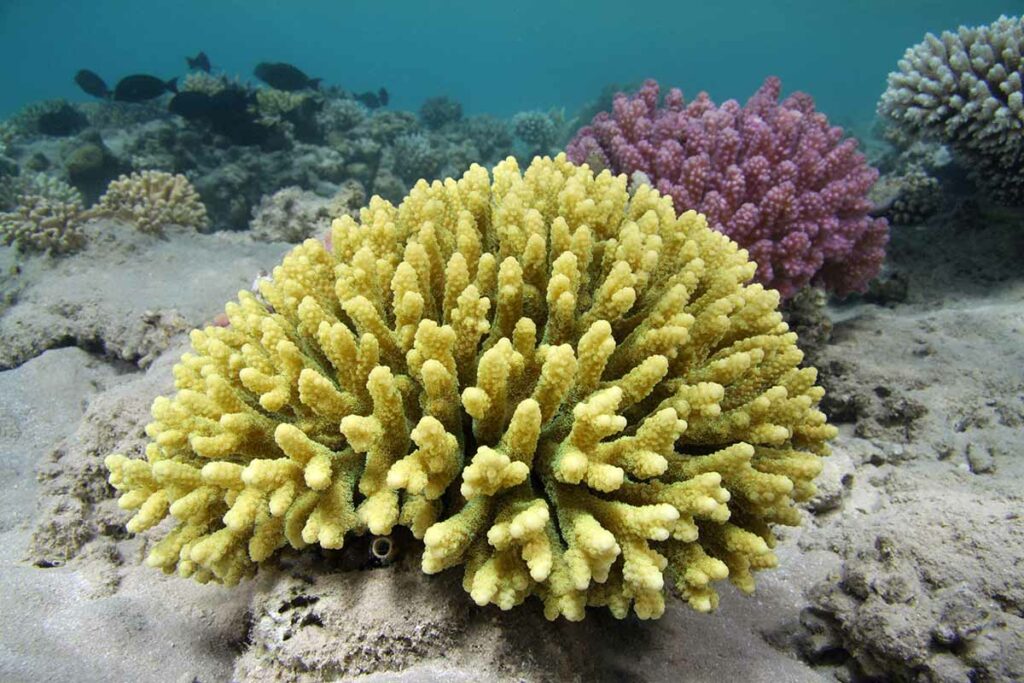
Branching coral is common in the Indo-Pacific region, and typically forms colonies that stretch out in finger-like forms. The branches can be very thin and delicate. When it comes to its branches, they tend to grow unpredictably in many directions, creating a bushy-like body.
Pillar Coral (Dendrogyra cylindricus)
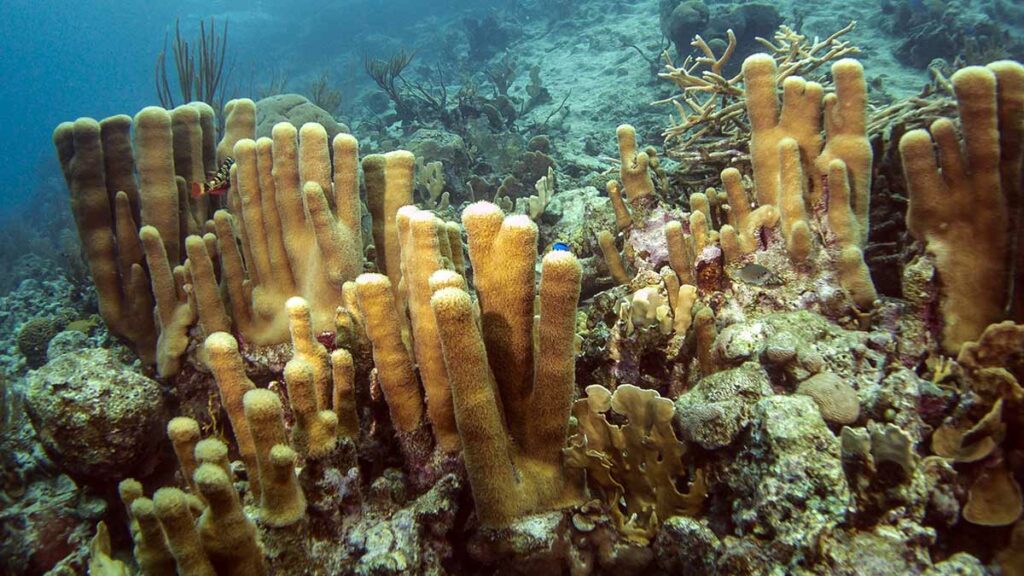
This type of hard coral grows up from the sea floor, but doesn’t have any secondary branching. They can grow to be up to 2.5 m (8 ft) tall, on both flat and sloping sea floors at a depth of between 1 to 20 m (65 ft). They are one of the few types of hard coral whose polyps can commonly be seen feeding during the day.
Table Coral (Acropora hyacinthus)
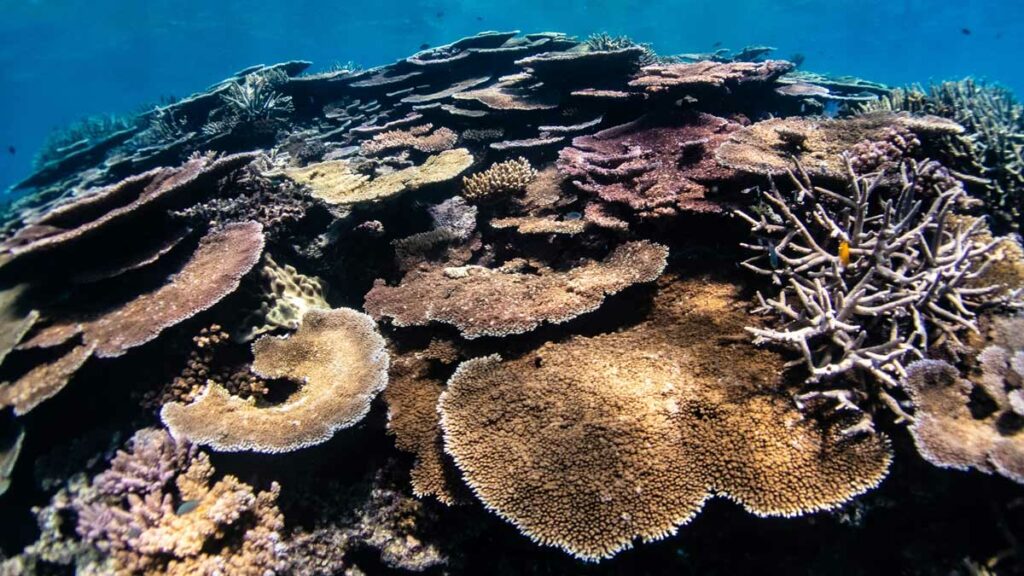
Table coral is the same branching type of coral as Staghorn coral, however it grows as flat plates. The shape of table coral is ideal to expose as much of their surface as possible to sunlight. The usual color of table coral is a dull brown or green. However, it is brightened up by the numerous reef fish that shelter under and around its plates.
Grooved Brain Coral (Diploria labyrinthiformis)

This coral is named after its unique shape and grooved surface which resembles an animal brain. The life span of the largest brain coral is 900 years. Their colonies can grow as large as 6 or more feet (1.8 m) high.
Blue Coral (Heliopora coerulea)
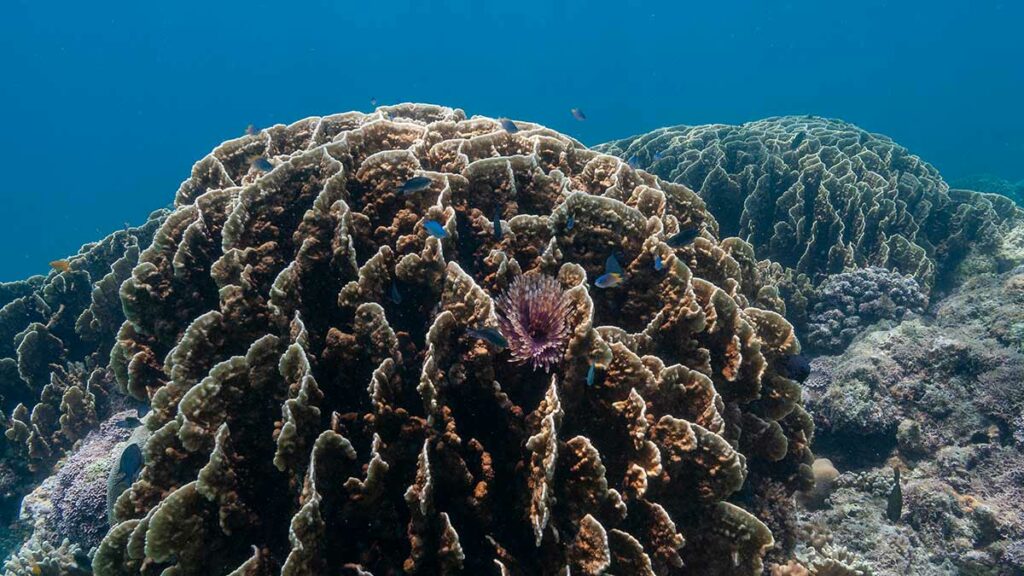
Blue coral is named for their distinctive, permanently blue skeleton, which is generally hidden by greenish-grey or blue polyps. Blue coral can be seen in tropical waters, on intertidal reef flats and upper reef slopes.
Great Star Coral (Montastraea cavernosa)
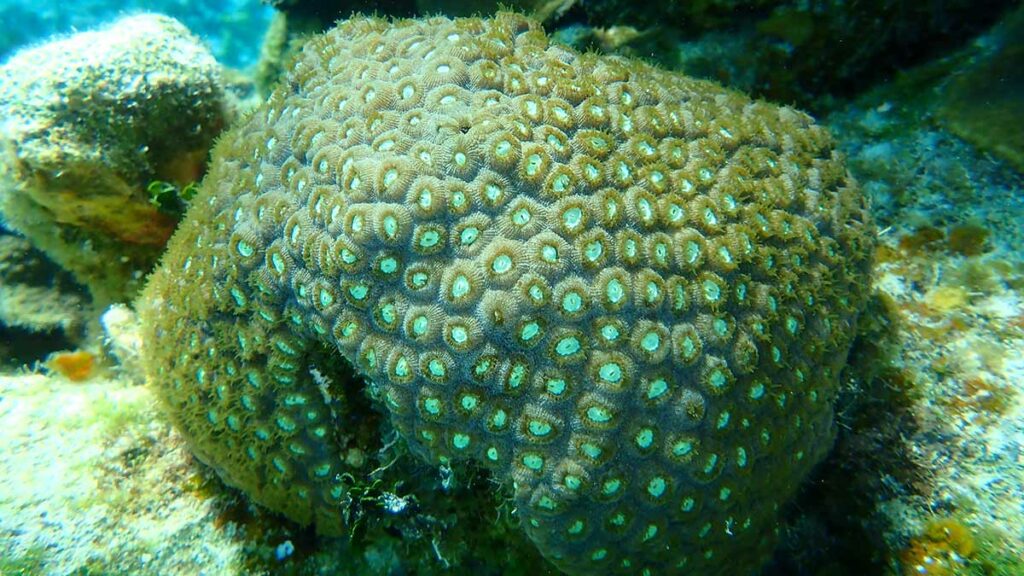
This type of coral is a colonial stony coral found in the Caribbean seas. It forms into massive boulders and sometimes develops into plates. Its Polyps are the size of a person’s thumb and can be seen fully extend at night.
Tube Coral (Tubastraea)
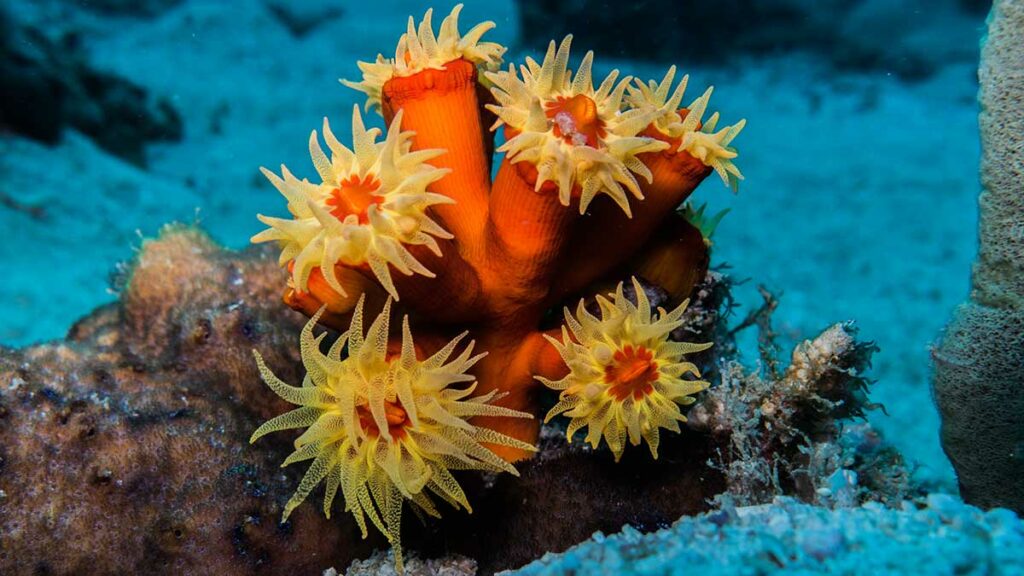
Tube Coral is a large polyp stony coral and is found in a variety of colors and forms depending upon the species. The tubastraea faulkneri is known as the Orange Cup or Sun Coral, pictured above.
Elkhorn Coral (Acropora palmata)
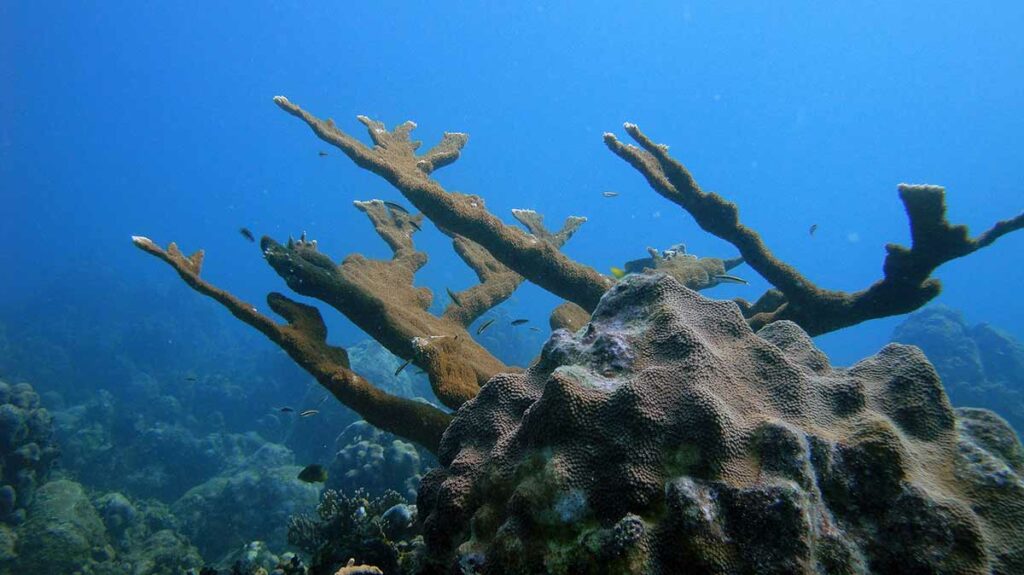
This species of hard coral is structurally complex with many large branches. The coral structure closely resembles that of elk antlers. A popular choice as a home for lobsters, parrot-fish, snappers and other reef fish. Elkhorn coral colonies are incredibly fast growing with an average growth rate of 5 to 10 centimeters (2.0 to 3.9 in) per year and can eventually grow up to 3.7 meters (12 ft) in diameter.
Coral Apps to Download
Not everybody can memorize which coral is which, and with the help of modern tech, there are now coral identifications apps that can help you identify the types of hard coral on the go!
Coral Finder
Coral Finder uses image recognition tech, analyzing photographs that users capture and upload, then providing accurate species identification.
Besides helping users identify coral types, they also offer in-app opportunities to contribute to coral research and reef conservation efforts. Because of this opportunity from the company behind Coral Finder, users can submit observations which will provide new and timely evidence for progress in scientific coral studies.
Reef Life Pro
Master coral identification with Reef Life Pro, which uses image recognition tech just like Coral Finder. Besides helping users identify hard coral, the app also lets users upload pictures of fish and invertebrates, offering various information about them as well.
Upon opening the app, users will find a huge database of marine species organized by category of coral, fish, and invertebrates. After the user clicks on their desired category, they will be met with information about hundreds of organisms. Including their names, scientific names, and where they habituate.
CoralWatch
Developed by the University of Queensland, the application called “CoralWatch” allows scientists and users monitor the health of coral reefs. This is made possible by documentation submitted by users during their underwater explorations.
One important thing to note when submitting is the coral color – which serves as an indicator of coral health. If the color of the coral is different from its usual color, then it could be signs of coral stress or bleaching. Offering a wide range of color categories, CoralWatch helps users give the actual shade of the color that they observe.
Exploring Half of the Coral Family
Scuba diving becomes more immersive when you understand the vibrant life beneath the surface, just waiting to be seen and appreciated. These small marine invertebrate animals make us curious to understand the beauty of their homes, the lives they live, and stories they tell through their colors. With each dive, remember that the coral you enjoy looking at need to be protected at all costs. So, be a responsible diver and swimmer.
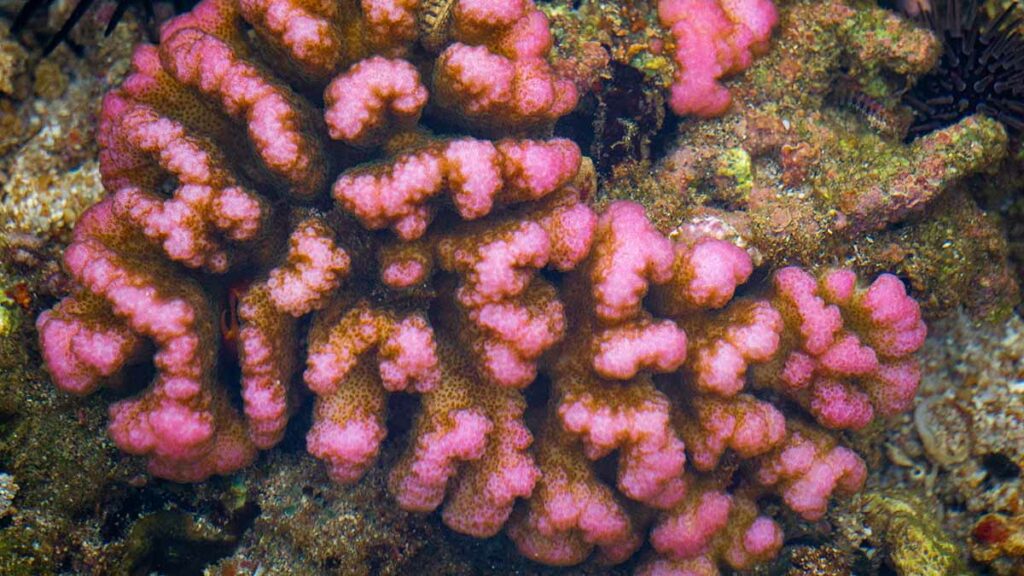
Frequently Asked Questions
Besides the most common ones listed in this article, there are more than 3,000 types of hard coral.
The best way to identify them is to study up – that way, you can know what they are or at least what family they belong to just by looking at their shape and color. Typically, hard corals are identified by their massive or boulder-like structure, if they resemble a staghorn or branching, are plating or tabular, encrusting, columnar, or foliose (leaf or vase like).
All types of hard coral are important because they are the primary skeletons of coral reef ecosystems. They provide habitat and shelter for marine life, such as fishes ducking away from predators. Additionally, they help the global carbon cycle by sucking carbon dioxide from the atmosphere and absorbing it into their calcium carbonate skeletons.
Hard coral eats by using the tentacles surrounding their mouth, utilizing sharp tiny structures (nematocysts) on them that contain venom to capture prey. After successfully paralyzing their prey, they coat them in mucus to immobilize them further and ease the transfer from their tentacle to their mouth.

